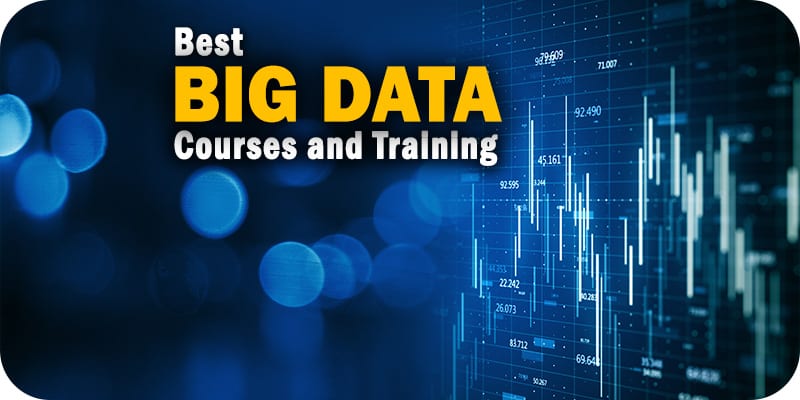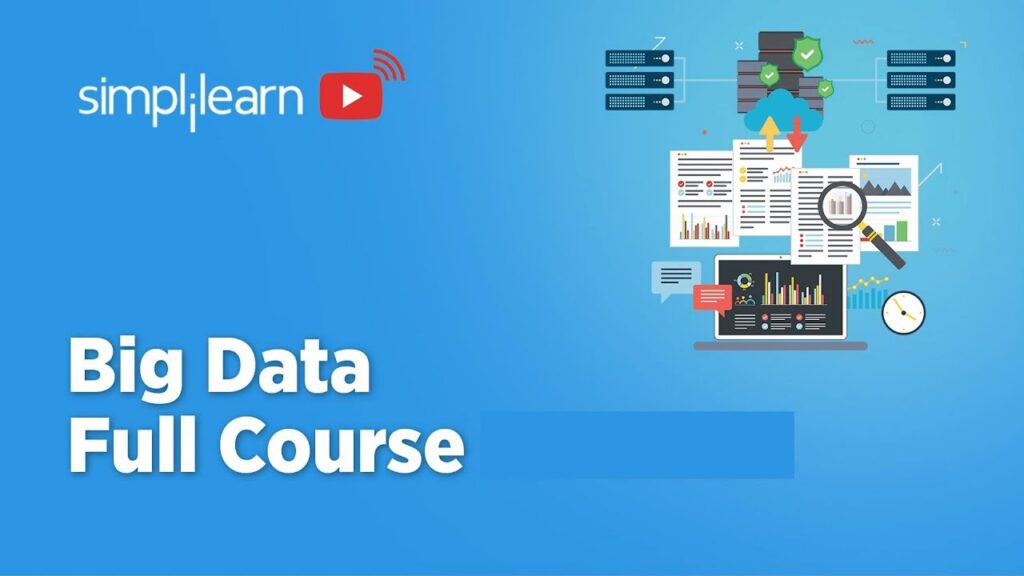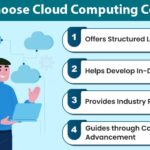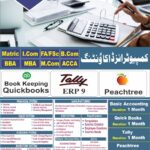Before all this, if you’d asked me about "Big Data," I’d probably have pictured a giant, intimidating server room humming with secrets, guarded by brilliant, bespectacled tech wizards. It felt like something entirely out of my league, a concept whispered in hushed tones by industry leaders, but completely impenetrable for someone like me, who, let’s be honest, mostly used Excel for grocery lists.
The Whisper That Became a Roar: Why I Even Looked at a Big Data Course
You know how it is. You start hearing words pop up everywhere. "Data-driven decisions," "analytics," "machine learning." And then, "Big Data." It was like a constant hum in the background of every business article, every tech news piece. My colleagues were talking about it, my LinkedIn feed was full of it, and frankly, I was starting to feel a bit left behind.
I’m not a coder by trade. My background was more in, let’s say, understanding people, not lines of code. But the more I heard about how companies like Netflix knew exactly what I wanted to watch next, or how Spotify curated playlists that felt like they were reading my mind, the more I realized: this "Big Data" thing wasn’t just for the super-nerds. It was shaping my world. It was impacting everyone.
That’s when the curiosity truly sparked. I wasn’t looking to become a Silicon Valley prodigy overnight, but I wanted to understand. I wanted to speak the language, even if just a little. And that’s how I started searching for a Big Data course.
Taking the Plunge: Finding the Right Big Data Course for a Beginner
The initial search was, well, overwhelming. There were courses promising "mastery in 3 days" (yeah, right), university programs that looked like they required a rocket science degree to even apply, and everything in between. My main criteria were simple:
- Beginner-Friendly: I needed something that didn’t assume I already knew what Hadoop was (spoiler: I didn’t).
- Practical & Hands-On: I learn by doing, not just by listening to lectures. I wanted to get my hands dirty, even if it meant making a mess.
- Real-World Application: How would this actually help me or a business? I wanted to see the connection.
- No AI-Generated Jargon: I wanted human instructors, human explanations, not something that sounded like it was written by a robot trying to sound smart.
After sifting through countless options, reading reviews, and even trying out a few free introductory modules, I finally settled on a Big Data course that felt just right. It was an online program, which suited my schedule, and it promised a clear, step-by-step approach from the very basics.
Inside the "Classroom" (My Living Room): What I Actually Learned
Let me tell you, the first few weeks were a mix of "Aha!" moments and "What on earth am I looking at?" moments. But the beauty of a well-structured Big Data course for beginners is how it gently leads you through the fog.
1. Demystifying the Jargon: From "Volume" to "Velocity" to "Variety"
They started by breaking down what Big Data actually is. It’s not just "lots of data." It’s data that’s so big (volume), comes in so fast (velocity), and is in so many different forms (variety) that traditional tools just can’t handle it.
We talked about the "3 Vs," and suddenly, it clicked. It wasn’t about the size of the spreadsheet; it was about the challenge of managing and making sense of that scale and complexity.
2. The Toolkit: Learning to "Speak" Data
This was where it got really interesting. We weren’t just learning definitions; we were learning tools.
- Python: This programming language became my new best friend. It felt less like complex coding and more like learning a powerful new dialect to communicate with data. We used it to clean, manipulate, and explore datasets.
- SQL (Structured Query Language): This was like learning how to ask specific questions to a database and get exactly the answers you needed. Super practical for pulling out insights.
- Hadoop & Spark (The Big Guns, Simplified): These were the names that used to make my head spin. But the course broke them down. We learned why they exist (to handle massive datasets across many computers) and got a taste of how they work, without getting bogged down in the deepest technicalities. It was like learning how to drive a powerful car without needing to understand every single detail of the engine.
- Data Visualization: This was, arguably, the most fun part for me. Taking all those numbers and turning them into beautiful, understandable charts and graphs. Seeing a story emerge from what was once just a sea of digits? That’s pure magic.
3. The Mindset Shift: Thinking Like a Data Detective
Perhaps the biggest takeaway wasn’t just learning the tools, but learning how to think. The Big Data course taught me to approach problems like a detective.
- What question am I trying to answer?
- What data do I have?
- Is it clean? Is it reliable?
- How can I transform it to reveal insights?
- What story is this data telling?
It wasn’t about finding the "right" answer, but about understanding the process of inquiry and discovery.
My Favorite Parts: The "Wins" and "Aha!" Moments
There were so many moments where things just "clicked."
I remember the first time I successfully wrote a Python script to clean a messy dataset and then generated a graph that clearly showed a trend. It was a small victory, but it felt enormous. It was like I had been given a special pair of glasses that allowed me to see patterns where before there was just noise.
Another "aha!" was realizing that Big Data isn’t just for massive corporations. Even smaller businesses generate huge amounts of data – customer interactions, website traffic, sales figures. And the principles I was learning in the Big Data course could be applied to help them make smarter decisions too. That felt incredibly empowering.
The Bumps in the Road: It Wasn’t Always Easy!
Let’s be real, it wasn’t a walk in the park. There were times I stared at error messages on my screen for what felt like hours, convinced I was too dense to ever grasp this stuff. Debugging code, understanding complex statistical concepts, or just getting a new tool to install correctly – those moments could be incredibly frustrating.
But that’s where the community aspect of the course, and the dedicated instructors, really shone. Asking questions, seeing others struggle with similar issues, and eventually finding a solution, made the victories even sweeter. It taught me patience and perseverance, skills that are valuable far beyond just Big Data.
Beyond the Certificate: What a Big Data Course Can Do for You
Finishing that Big Data course wasn’t just about getting a certificate. It was about a transformation.
- Confidence: I could finally participate in conversations about data at work without feeling completely lost. I understood the challenges and the opportunities.
- New Skills: I now had practical skills in Python, SQL, and data visualization that were immediately applicable.
- Career Opportunities: It opened my eyes to entirely new career paths – data analyst, business intelligence specialist, even stepping stones towards data science. It made me more valuable in my current role and much more marketable for future ones.
- Problem-Solving Power: The analytical mindset I developed helps me approach all sorts of problems, not just data-related ones, with more clarity and structure.
Is a Big Data Course Right for YOU? My Honest Advice
If my story resonates with you, if you’ve been feeling that same hum of curiosity or the pang of being left behind, then absolutely, a Big Data course might be exactly what you need.
Here’s what I’d recommend looking for, especially if you’re a beginner:
- Focus on Fundamentals: Ensure it covers the core concepts (the 3 Vs, common tools, basic statistics) clearly.
- Hands-On Projects: This is non-negotiable. You need to do to learn.
- Supportive Community/Instructors: When you hit a wall (and you will!), having help is crucial.
- Real-World Case Studies: See how Big Data is applied in actual industries.
- Flexible Learning: Online courses are great for fitting around your life.
- Check Reviews: See what other beginners thought of the program.
Don’t be intimidated by the jargon or the perceived complexity. Big Data, at its core, is about understanding the world around us better, using the vast amounts of information we now have. And a good Big Data course will break down those barriers and show you just how accessible and exciting this field can be.
My journey started with confusion and ended with clarity and a whole new set of skills. Yours can too. So, take that first step. Explore the options. And maybe, just maybe, you’ll find your own Big Data odyssey waiting to begin.



